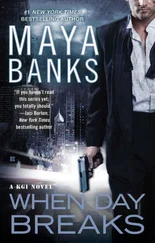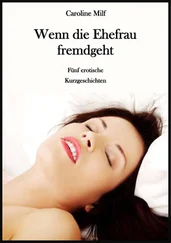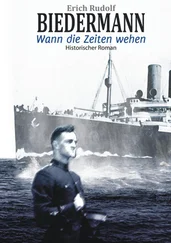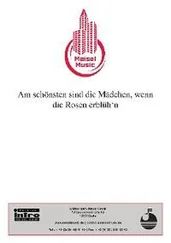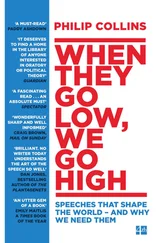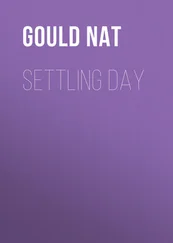That was how the day went, calling and being called. I knew that one part of me enjoyed being the centre of attention, and while wary of this, I was prepared to use it to help get me through.
At about six we drove to Oxford. Resilient as ever, Gail had recovered. It was a quiet, reflective journey; mostly we were worrying about how Grace would take the news. When we arrived she was standing confidently outside her college, looking cool and contained. I said straight away that I had serious cancer and her response was typical – blunt with an edge of humour: ‘I knew when you phoned that either you had cancer or you and Mum were getting a divorce.’
We had dinner, which was warm and close, but with an undercurrent of anxiety, and I was very sad to leave her. Gail and I drove back without speaking much.
So the first day with cancer ended.
That night I woke and for a moment felt fear and panic, black thoughts attacking like demons. A survival instinct kicked in and I treated my fears almost like a video game, repelling each negative impulse one by one, turning them from dark to light. This worked well enough, and the demons never got through. (In time I was to develop a crude form of meditation and used simple affirmations that worked almost all the time. I learnt how to change my mood, a basic skill of cancer survival.)
The next day I returned to the London Clinic to meet Satvinder Mudan, the surgeon who had suddenly appeared during my fateful endoscopy. He was young, energetic and articulate, and enjoyed the ebb and flow of argument. Like many surgeons he took the glass-half-empty approach to life: the operation would involve a great deal of pain, the worst of it three or four days in intensive care that would be noisy and unpleasant, survival and cure a long way from guaranteed.
After a couple of sessions he gave my wife a copy of a book he had edited on cancer of the oesophagus; it was full of colour pictures of rather horrible-looking tumours of various kinds; worse, it claimed the survival rate was less than 10 per cent. Perfect bedtime reading for Gail.
This was the first I had heard of oesophageal cancer, which I now know to be the solid cancer with the most rapidly increasing number of cases in the world at present, and one of the most lethal.
It is impossible to know when my cancer started. From a young age my stress had revealed itself through my stomach, and gastric pains had been a feature of my life. A doctor told me that my form of oesophageal cancer often caused painful symptoms when first established, but then lay low, perhaps for years, with few if any symptoms until it was too late. That is why the cancer is so lethal.
This description fitted my pattern exactly: I had experienced a short phase of acute discomfort, but this had passed and been replaced by low-level indigestion, and a slight cough when I ate. Enough to worry me now and again, but never enough to persuade me to confront the issue and have an endoscopy. I knew I should have done it, but I never quite did.
Satvinder made clear my position: if the cancer had spread I would not survive, but if it had not, then cure was possible. The next week would involve numerous tests to see if we could advance to surgery. I liked him. He was confident and sharp, and from where I was sitting he was all I had. I wanted help now. And he was fast and very competent.
That same day I was to have a CT scan, then in the following days a laparoscopy, a PET scan and an endoscopic ultrasound. Tests I had never previously heard of were to govern my future.
Back home the flow of calls had become a flood, and the house was filling with flowers. I wrote in my diary at the time that ‘I felt engulfed by a tidal wave of love from dozens and dozens of people, and this love has an almost physical power, lifting me up during all the bad moments and carrying me through. At night I can almost feel the power of prayer.’ Peter Mandelson called with a typically stringent view: ‘It will be tough but other people have got through it and so will you.’ He was right, of course, as he often is.
On Thursday, Tony Blair visited, and so began an entirely new phase in our relationship. Until then we had been friends and colleagues, close but in a way constrained. Cancer was to change that. At that first meeting he displayed an emotion I had not seen before, saying that he had taken me for granted, had acknowledged my contribution but not fully appreciated it. I felt this was not just about me but about him, this brush with cancer releasing emotions that office and the negativity of public life had in some ways silenced.
And there was another reason too. Tony is a deeply religious person, imbued with a strong sense of values, but he believes that these values, and his religious conviction, belong properly to a private realm, not the public world that dominated so much of his life. He made a kind of distinction between Church and State, and is in that way a secular politician.
But with my cancer we had left the public world and were living completely in the private realm, and his compassion, his religion and his values could in a way be liberated. What is certain is that he could not have been more assiduous in his support for me and my family throughout my illness, contacting me almost daily for much of its duration.
This division between public and private life is the fate of all politicians. They are constantly scrutinised but only rarely understood. I mention political people often in these pages, partly because they are my friends and are intrinsic to the story, but also because I want to show what they are like out of the limelight, acting as private individuals, and how, without exception, they never let me down.
The next Monday I returned to the hospital and was given the results of the tests. Satvinder said I had a carcinoma of the gastro-oesophageal junction, that the type of my cancer was adenocarcinoma (the type associated with high-stress, middle-aged, middle-class living, i.e. you lot reading this now!), and that it was about five centimetres wide at its maximum. There was no evidence that it had spread and we could now proceed to chemotherapy.
On Satvinder’s advice I decided to be treated by Maurice Slevin at the London Oncology Centre. By now I was fully immersed in the private system, something that caused my daughter Georgia great distress. She said I should stick to the National Health Service. In my heart I knew she was right, but for the moment I was clinging to the certainty of what I knew. I was using private medicine partly for rational, partly for emotional reasons. I had got into the habit of having my regular health tests carried out privately after my GP had told me that he did not believe in preventative testing, considering it to be counter-productive.
When I first noticed a difficulty in swallowing and knew I had a potential problem, I went instinctively and immediately to a private clinic which diagnosed the cancer and charted the way forward. Of course I could have changed direction but at that moment I was nervous of disruption, and at some deeper level anxious about the NHS. This was to change, but not for a while. I wanted security.
Maurice Slevin was an energetic South African who my wife rather disconcertingly described as dashing. Everything about him was high-tech and modern, with no trace of the genteel comfort that is normally the hallmark of private medicine. He was confident, articulate and impressive, and helped me through this early period. He made it clear that almost certainly the chemotherapy would not be as difficult and frightening as I thought it might be.
He explained that I would undergo the standard protocol for oesophageal cancer, called the MAGIC trial, which had been developed in the UK and was now used around the world. This meant three sessions before and three after the surgery with a combination of drugs called EOX (epirubicin, oxaliplatin and capecitabine). I would probably lose my hair, but even that was not certain if I used something called a cold cap that would freeze my head during treatment (which, it was to turn out, was the worst thing about the whole process).
Читать дальше

